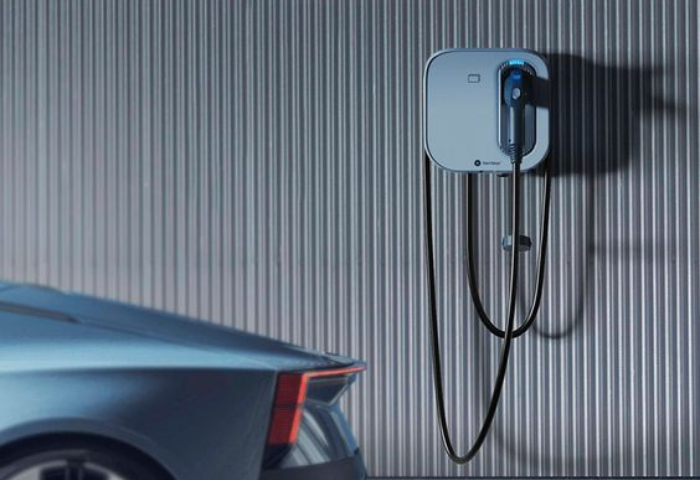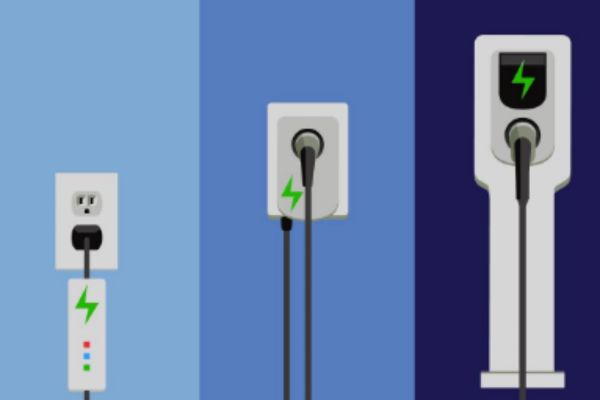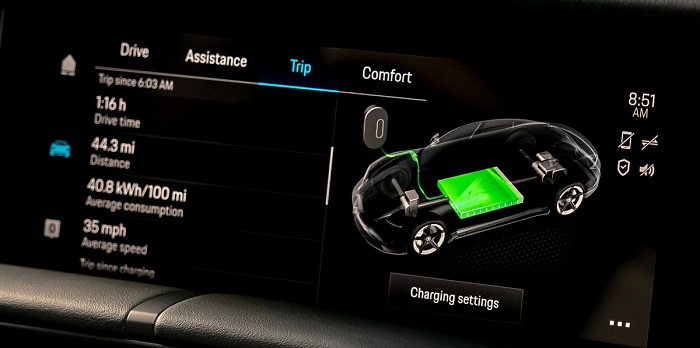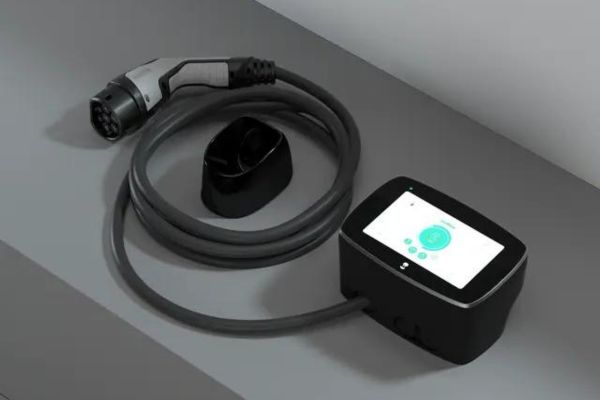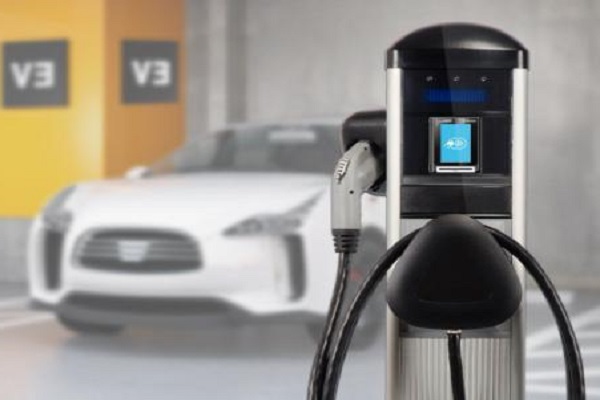Solar Edge Smart EV Charger Review: Is It Worth the Investment?
Experience the future of eco-friendly vehicle charging with the Solar Edge Smart EV Charger, an innovative solution that seamlessly integrates with your home’s solar energy system. This state-of-the-art charger not only provides efficient energy management but also maximizes the use of solar power to charge your electric vehicle.
By combining solar energy capture with electric vehicle charging, the SolarEdge Smart EV Charger helps you reduce your carbon footprint and decrease electricity costs. Ideal for environmentally conscious homeowners, this charger is a step towards a more sustainable lifestyle, ensuring that your transportation needs are as green as possible.
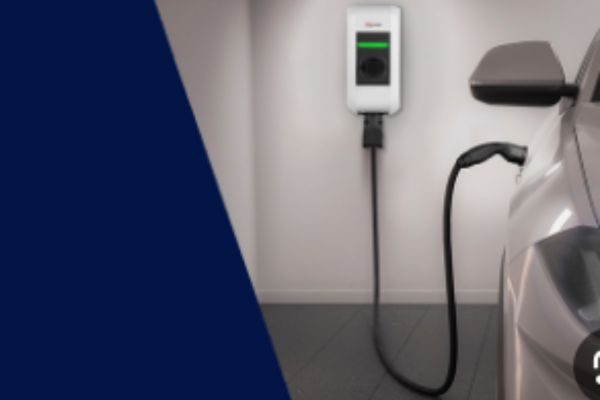
Introduction
As the world accelerates towards sustainable energy solutions, the integration of electric vehicle (EV) charging with solar power is becoming increasingly significant. The SolarEdge Smart EV Charger is at the forefront of this movement, providing a seamless blend of solar energy utilization and electric vehicle charging. This innovative technology not only promotes the use of clean energy but also enhances the efficiency and convenience of charging electric vehicles at home or in commercial settings.
This article provides an overview of the SolarEdge Smart EV Charger
Electric vehicle owners can maximize the benefits of solar energy with the SolarEdge Smart EV Charger. Thanks to its integration with the SolarEdge inverter system, EV owners can now directly charge their vehicles with solar energy from their photovoltaic (PV) systems. This integration ensures that the charging process is both cost-effective and environmentally friendly. The Smart EV Charger is capable of using 100% renewable energy, either directly from the solar panels or from stored solar energy in a home battery system.
The SolarEdge Smart EV Charger boasts several key features.
- Seamless integration with solar energy systems: The charger works in harmony with SolarEdge inverters, optimizing the use of solar power for EV charging.
- Smart scheduling and monitoring: Users can schedule charging times to coincide with peak solar production or a lower electricity rate, as well as monitor charging status and energy usage via a user-friendly app.
- High efficiency and rapid charging: The charger supports fast charging capabilities, ensuring that EVs charge quickly and efficiently using available solar power.
- Enhanced safety and reliability: Built with advanced safety features, the charger ensures safe operation and protection for both the vehicle and the home electrical system.
The integration of EV chargers with solar energy holds significant importance
Integrating EV chargers with solar energy systems presents numerous advantages, making it a crucial step towards a sustainable future. Here are some key reasons why this integration is important:
- Cost savings: By utilizing solar energy, EV owners can significantly reduce their reliance on grid electricity, resulting in lower energy bills. Charging an EV with solar power can be much cheaper than using conventional electricity, especially with time-of-use rate plans.
- Solar-powered EV charging provides energy independence, reducing reliance on fossil fuels and the grid. This is particularly beneficial during grid outages or in areas with an unstable electricity supply.
- Optimized energy use: You can program integrated systems to charge vehicles during peak solar production times, ensuring the most efficient use of generated solar energy and minimizing waste.
- Increased adoption of renewable energy: By making solar-powered EV charging more accessible and convenient, this integration can encourage more people to switch to electric vehicles and install solar systems, accelerating the transition to renewable energy sources.
The Environmental Benefits of Solar-Powered EV Charging
The environmental benefits of using solar energy to charge electric vehicles are substantial, contributing to the fight against climate change and pollution. These benefits include:
- Reduced greenhouse gas emissions: Compared to using electricity from fossil fuels, charging EVs with solar power significantly reduces greenhouse gas emissions. This helps to mitigate the effects of climate change.
- Decreased air pollution: Solar-powered EV charging reduces the emission of pollutants such as nitrogen oxides (NOx) and particulate matter, which are harmful to human health and the environment. This leads to improved air quality, especially in urban areas.
- Sustainable resource use: Solar energy is a renewable resource, unlike fossil fuels, which are finite and environmentally damaging. Utilizing solar power for EV charging supports sustainable energy practices and reduces the depletion of natural resources.
- Lower carbon footprint: By combining the use of electric vehicles with solar energy, individuals and businesses can significantly reduce their overall carbon footprint, contributing to a more sustainable and eco-friendly future.

Solar Edge Home EV Charger
Product Description
Designed to be the pinnacle of efficiency and user-friendliness, the SolarEdge Home EV Charger provides a robust solution for electric vehicle owners who also own a solar energy system. This advanced EV charger not only allows for faster charging speeds, but it also enhances the overall utility of solar installations by directly utilizing solar power for charging, thereby optimizing energy usage and minimizing reliance on the grid.
Key Features and Benefits
- Solar Integration: It directly connects with your home’s solar energy system, using green energy to charge your electric vehicle.
- Dual Charging Modes: Offer the flexibility to charge using either solar power directly when available or through the grid when solar power is insufficient, always ensuring maximum efficiency.
- Smart Scheduling: Includes programmable scheduling to take advantage of lower electricity rates and optimal weather conditions for solar charging.
- Energy Monitoring: It comes equipped with a state-of-the-art monitoring platform that tracks energy usage and savings, giving you detailed insights into your environmental impact and operational costs.
Design and aesthetic appeal
- Sleek, Compact Design: The SolarEdge Home EV Charger boasts a modern, minimalist design that fits neatly in any garage or beside any home without being intrusive.
- User-Friendly Interface: This feature has an intuitive interface that makes it easy for users to operate and monitor their charging status.
- Durable Construction: Built to withstand environmental elements, ensuring longevity and consistent performance.
It is compatible with a variety of EV models.
With its adaptable connector system, the SolarEdge Home EV Charger is universally compatible with all major electric vehicle models. It supports both Level 1 and Level 2 charging, making it versatile for use with a wide range of vehicles from different manufacturers. Whether you own a Tesla, Nissan Leaf, Chevrolet Bolt, or any other electric car, this charger can accommodate your needs efficiently.
By integrating advanced technology with user-centric design, the SolarEdge Home EV Charger provides an optimal solution for managing electric vehicle charging through solar power, offering both practicality and style. This makes it an excellent choice for eco-conscious drivers looking to maximize their investment in solar energy and electric transportation.

Unified Power Solutions: PV and EV
The advent of sustainable technologies has revolutionized how we consume energy, with the integration of photovoltaic (PV) systems and electric vehicle (EV) chargers representing a significant leap forward. The SolarEdge Home EV Charger exemplifies this synergy, merging solar power generation with electric vehicle charging into a seamless, efficient solution. This unified approach not only simplifies the energy management system within homes but also significantly enhances energy independence.
Integration with SolarEdge PV Systems
Designed to seamlessly integrate with existing SolarEdge PV systems, the SolarEdge Home EV Charger offers a streamlined solution for harnessing solar energy. This integration allows for real-time management of solar production, storage, and energy consumption, all through a single, user-friendly platform. For maximum efficiency and cost savings, homeowners can monitor their system’s performance, control energy flows, and optimize how and when they use or store their solar energy.
The benefits of combined PV and EV charging are significant.
- Increased Energy Self-Consumption: By using solar power directly to charge electric vehicles, homeowners can significantly increase the percentage of self-generated solar energy they consume, reducing dependence on the grid.
- Reduced Energy Costs: Optimizing the use of solar energy for both home and transportation needs can lead to substantial savings on electricity bills.
- Lower Carbon Footprint: Utilizing renewable solar energy to charge EVs can drastically lower household carbon emissions, contributing to a cleaner environment.
- Enhanced Return on Investment: Integrating EV charging with solar PV systems can improve the return on investment for both technologies by increasing the utility and efficiency of the solar installation.
We present case studies of PV and EV integration.
- Residential Case Study: In a suburban neighborhood, a family installed a SolarEdge PV system along with the Home EV Charger and reported a 70% reduction in grid energy consumption. The family primarily charges their electric vehicle during peak solar hours to maximize the use of on-site solar energy.
- Commercial Case Study: A small business equipped its office with a SolarEdge PV system and multiple EV chargers for its fleet of company vehicles. This setup not only covered nearly 100% of the office’s power needs but also provided an eco-friendly perk for employees, encouraging EV adoption among the workforce.
- Community Impact: A residential complex implemented a combined SolarEdge PV and EV charging system, creating a sustainable living environment. This community initiative demonstrated a scalable model of energy independence and sustainability, highlighting significant reductions in communal energy costs and environmental impact.
These examples illustrate the practical and environmental advantages of integrating PV and EV charging solutions, demonstrating how SolarEdge is paving the way towards a more sustainable and energy-efficient future. This unified approach not only meets the increasing energy demands of modern households and businesses but also aligns with global efforts to combat climate change.
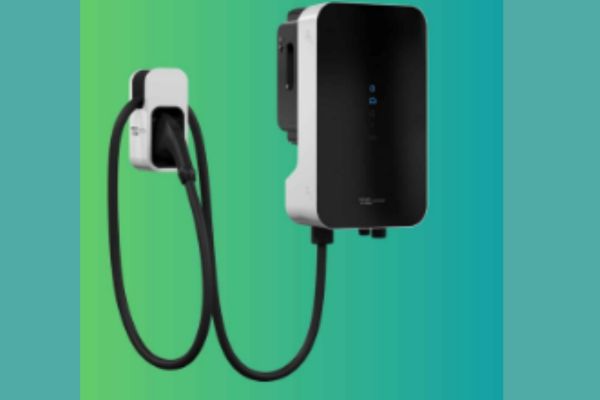
Maximize your energy investment.
In today’s energy-conscious world, maximizing the efficiency of your investments in sustainable technology is crucial. Integrating a SolarEdge Home EV Charger with your solar photovoltaic (PV) system represents a strategic approach to enhance energy management, boost savings, and increase the overall return on investment (ROI). Here’s a breakdown of how the combined power of PV and EV charging systems can transform your energy consumption and financial savings.
Cost savings and efficiency
Reduced Utility Bills: By charging your electric vehicle directly with solar power, you minimize your reliance on the grid, leading to significant reductions in your monthly electricity bills.
Optimized Energy Use: SolarEdge’s technology dynamically allocates solar energy to charge during optimal sunlight hours, thereby maximizing efficiency.
Peak Shaving: If solar power is insufficient, you can set the system to charge your EV during off-peak hours to take advantage of lower energy rates and reduce peak load charges from the grid.
Enhancing Solar Self-Consumption
By integrating an EV charger, you can immediately use the generated solar power to charge your electric vehicle, significantly increasing the amount of solar energy you consume yourself.
Decreased Energy Waste: By ensuring that most of the solar energy produced is used on-site, less energy is fed back into the grid, often at a lower value than what is consumed from the grid.
Improved System Utilization: By using solar energy to charge the EV instead of purchasing it from the grid, we can increase the overall utilization and efficiency of the installed solar panels.
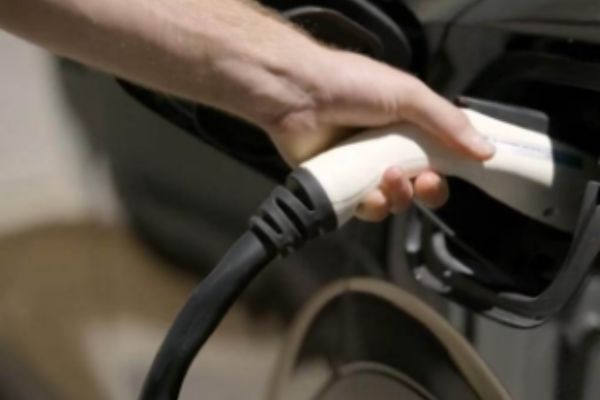
Return on investment (ROI) analysis
Accelerated Payback Period: The savings on electricity and increased self-consumption can significantly accelerate the payback period for the initial investment in both solar and EV charging systems.
Increased Property Value: In the real estate market, homes with integrated solar and EV charging systems are becoming more and more sought-after, which could lead to an increase in property values.
Government Incentives and Rebates: Many regions offer incentives for installing solar panels and EV chargers, such as tax rebates or credits, which can further enhance the financial return on these investments.
Long-Term Benefits
Sustainable Investment: Beyond immediate financial gains, investing in a solar-integrated EV charging system contributes to long-term sustainability goals by reducing carbon emissions and promoting renewable energy use.
Future-Proofing: As energy prices continue to rise and more regions push for renewable energy solutions, having a system that minimizes grid reliance is an excellent hedge against future energy cost increases.
By combining a SolarEdge Home EV Charger with a solar PV system, you are not only stepping into a greener future, but you are also positioning yourself for substantial financial benefits. This approach not only makes economic sense but also aligns with broader environmental goals, providing a compelling case for those looking to invest in sustainable and profitable energy solutions.

Dynamic load balancing
Dynamic load balancing is an essential feature for homes that utilize multiple energy sources and consumption devices, especially those integrating renewable energy solutions like solar panels and electric vehicle (EV) chargers. This technology plays a pivotal role in optimizing home energy use by automatically adjusting the distribution of electricity based on current load demands and energy availability.
Explanation and Benefits
What is dynamic load balancing?
Dynamic load balancing involves the automatic adjustment of power distribution within a home energy system. It guarantees the efficient use of energy, particularly from variable sources like solar panels, across various appliances and systems, including EV chargers, to avoid overloading the home’s electrical infrastructure.
Key benefits include:
- Enhanced Efficiency: Dynamic load balancing maximizes the use of every produced kilowatt by allocating power where it’s most needed and reducing waste.
- Overload Prevention: By dynamically adjusting the power supply electrical system, it helps avoid circuit overloads and prevents potential safety hazards.
- Improved Energy Management: Users gain better control over their home energy usage, which can lead to more informed energy consumption decisions and increased cost savings.
The process optimizes energy use in the home.
Dynamic load balancing is particularly effective in homes with solar PV installations and EV chargers. It seamlessly integrates these systems to optimize energy usage:
- Solar Energy Optimization: During peak solar production hours, the system can prioritize charging the EV and running high-energy appliances. This maximizes the direct use of solar energy, reducing reliance on the grid.
- Battery Storage Integration: In homes with battery storage systems, dynamic load balancing can decide when to store energy, use it directly, or even sell it back to the grid based on real-time usage and rates.
- Evening Out Energy Demands: By balancing the load throughout the day, the system ensures that energy consumption is as smooth and efficient as possible, avoiding spikes that could lead to higher charges during peak times.
Real-life Examples of Load Balancing
Residential Example:
In a residential setting, a family with a SolarEdge system noticed that their solar panels produced the most energy in the midday sun. The dynamic load balancing system directs excess solar power to charge the EV parked in the garage and runs the dishwasher and laundry machines during peak hours rather than evenings. This not only maximizes the use of solar energy, but also reduces the amount of energy required from the grid during more expensive peak hours.
Commercial Example:
A small business with solar panels, an EV charging station for employees, and a dynamic load balancing system installed demonstrates that during low customer traffic and high solar output, the system diverts energy to power the office’s air conditioning and charge the company’s delivery EVs. This efficient use of energy results in significant cost savings and enhanced sustainability for the business.
Dynamic load balancing is a wise investment for both modern homes and businesses, guaranteeing the optimal and sustainable use of all available energy resources. This technology not only saves money, but it also enhances the energy system’s resilience and efficiency by intelligently managing where and when energy usage occurs.
We provide training and education for SolarEdge EV chargers.
Effective training and education programs are vital for ensuring the successful installation and operation of sophisticated technologies like the SolarEdge EV Charger. Both installers and customers benefit from these programs, which guarantee accurate installation and efficient system maintenance while also allowing users to maximize their investment. Here’s how SolarEdge can approach training and education:
Resources for installers and customers
- Installation Manuals: These are detailed manuals that provide clear instructions and guidelines on how to install the SolarEdge EV Charger correctly and safely.
- User Guides: Easy-to-understand user manuals and quick start guides that help customers navigate the functionalities and features of their EV charger.
Detailed training programs
- Installer Training: Comprehensive training sessions that cover everything from basic installation to advanced troubleshooting techniques. These are frequently conducted in person or via webinar.
- Workshops for customer education aim to instruct customers on the efficient management and use of their EV chargers, with a particular emphasis on optimizing energy consumption and comprehending system monitoring.
We are installing and commissioning the SolarEdge EV charger
- Step-by-Step Installation Guides: Detailed guides that walk installers through every step of the installation process, from site assessment to system startup.
- Commissioning Procedures: Provide clear instructions on how to commission the system after installation to ensure optimal efficiency and proper integration with home energy systems and solar panels.
Step-by-step installation guides and videos
- Video Tutorials: On demand, installers and customers can access engaging and informative video tutorials that show practical installation and troubleshooting steps.
- Illustrated Guides: Visually detailed guides that help installers and homeowners visualize the setup process, enhancing understanding and reducing installation errors.
Ongoing education and updates
- Webinars and Online Courses: Regularly updated training modules and live webinars that keep installers and customers informed about the latest software updates, features, and best practices.
- Newsletters and Updates: Frequent updates sent via email or available on the SolarEdge website provide the latest information on product developments, industry news, and regulatory changes.
Installer certification programs
- Certification Courses: These are structured courses that installers must complete in order to become certified SolarEdge EV charger installers. These often include both theoretical knowledge and practical assessments.
- Continuing Education Credits: Installers have the opportunity to earn continuing education credits to maintain their certification status, ensuring they stay up-to-date with the latest technologies and installation standards.
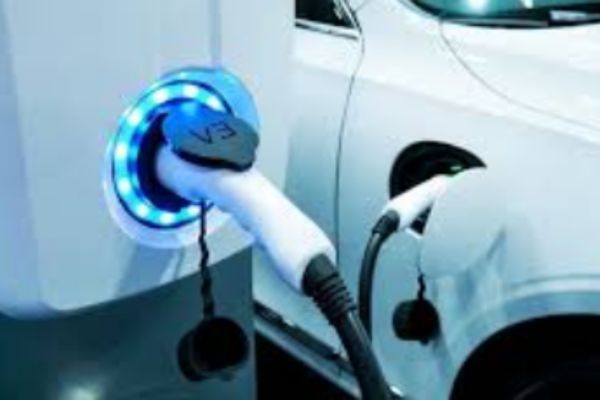
Helpful Tools for Installers
By investing in comprehensive training and education, SolarEdge ensures that both installers and customers are well-equipped to handle the installation and operation of the SolarEdge EV Charger. This not only maximizes system performance but also enhances customer satisfaction and supports the broader adoption of sustainable energy solutions.
Tools for monitoring and managing
Software for System Monitoring: Tools that provide real-time monitoring of installations, such as solar panel monitoring systems or HVAC management software.
Remote Diagnostic Tools: Applications that allow installers to troubleshoot and manage systems remotely, reducing the need for on-site visits.
Technical training and certification
Online Courses and Webinars: Platforms like Coursera, Udemy, or industry-specific training providers offer courses on new technologies and installation techniques.
Certification Programs: Many industries have certification programs that validate installers’ skills and knowledge, such as Cisco’s certifications for network installers or NABCEP certifications for solar installers.
Sales Training
Workshops and seminars: These can help installers learn how to effectively communicate the benefits of their products and services to potential clients.
Online sales training programs, specifically designed for installers who need to pitch technical products, aim to enhance sales strategies and customer interaction.
Installer Support Resources
Technical Support Hotlines: These are dedicated lines where installers can get immediate help from experts when facing technical difficulties.
Online Forums and Communities: Platforms where professionals can share advice, solutions, and experiences with peers in the industry.
These tools and resources can greatly enhance the efficiency, effectiveness, and professionalism of installers in various fields.
Related Documents
For installers and service providers, having well-organized and accessible information is critical to delivering high-quality service. Here’s how you can structure and provide access to essential documents and supporting resources:
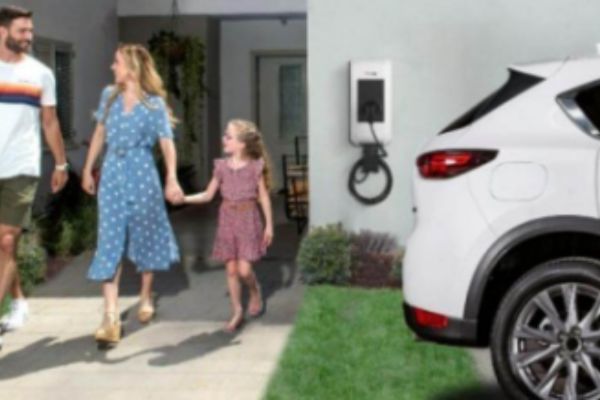
Access to technical and product documents
Digital Libraries: Implement a digital document management system where installers can easily search for and access technical datasheets, product specifications, and performance reports.
Mobile Access: Make sure that these resources are mobile-friendly, allowing installers to view documents on-site via tablets or smartphones.
Knowledge Center Resources
Online Knowledge Bases: Develop comprehensive online portals that include articles, how-to guides, and video tutorials.
Interactive Tools: To aid in planning and implementation, offer resources such as part finders, compatibility checkers, and design software.
Installation manuals and user guides
Provide these documents in a downloadable format for offline access.
Video Guides: Complement written manuals with video demonstrations that guide installers through complex procedures.
Safety and compliance documents
Maintain regular updates and access to documents that explain regulatory requirements and industry standards.
Safety Training Modules: Offer online or in-person training sessions focused on safety practices and compliance standards.
Customer support and assistance
How to get help
SolarEdge offers multiple avenues for customers and installers to seek help and support. Whether you need technical assistance or have general inquiries, SolarEdge ensures you can get the help you need quickly and efficiently.
Support Channels
- Technical Support Hotline: A dedicated phone line where trained technicians provide immediate assistance for technical issues and troubleshooting.
- Email Support: Contact SolarEdge support via email for non-urgent inquiries or detailed technical questions, contact SolarEdge support via email.
- Live Chat: An online chat service is available on the SolarEdge website, providing real-time support for common questions and issues.
- Online Support Portal: A platform where users can submit support tickets, track the status of their inquiries, and access a wide range of support resources.
FAQ and Troubleshooting
SolarEdge’s website features a comprehensive FAQ section and troubleshooting guides:
- FAQs: Answers to common questions about SolarEdge products, installations, and operations. This resource helps users quickly find solutions to common issues.
- Troubleshooting Guides: Step-by-step troubleshooting documents that help diagnose and resolve common problems with SolarEdge systems.
- Video Tutorials: Instructional videos that visually guide users through troubleshooting processes and common fixes.
Warranty and Service Information
SolarEdge provides detailed information on warranties and service options for their products.
- Warranty Documentation: Information on SolarEdge product warranties’ terms and conditions, including coverage details and claim procedures.
- We provide details of available service plans, including extended warranties and maintenance agreements, to ensure long-term support and reliability.
- Warranty Claims: Instructions on how to file a warranty claim, including the necessary forms and contact information.
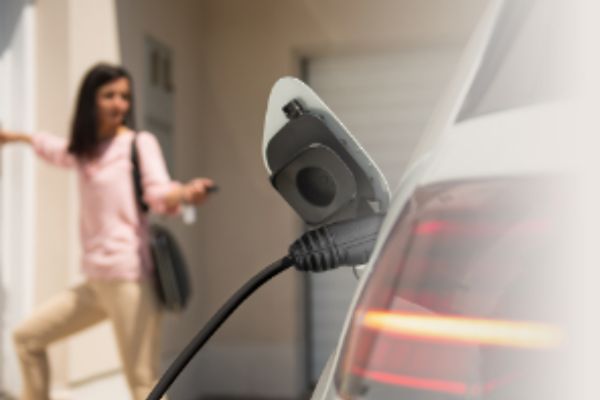
Find an installer.
A Guide to Locating Certified Installers
Manufacturer’s Website: Begin by visiting the product manufacturer’s website, which frequently has a directory of certified installers.
Certification Bodies: Check with organizations that certify professionals in the relevant industry, such as electrical or solar installers.
Importance of Professional Installation
Safety: Professional installers receive training on how to handle electrical components safely.
Efficiency: Correct installation ensures that the product operates at peak efficiency.
Warranty: In order to keep warranty coverage valid, many manufacturers require professional installation.
Tips for Choosing the Right Installer
Check Certifications: Ensure that the installer has all of the necessary industry certifications.
Read Reviews: Look at customer reviews and testimonials to gauge the installer’s reputation.
Compare Quotes: To find the best balance of price and service, get quotes from several installers.
Product Specifications
SolarEdge Smart EV Charger
Detailed Specs: Includes information about the charger’s output capacity, efficiency, and integrated features such as app connectivity.
Verify the charger’s compatibility with different electric vehicle (EV) models and its ability to integrate with existing home energy systems, such as solar panels.
Technical Specifications
- Voltage and Current: Information about the charger’s voltage and current requirements, as well as its capabilities.
- Connector Types: Information on the types of connectors used by the charger, ensuring compatibility with various EV models.
Features of the mySolarEdge App
Real-time monitoring and control
Instantaneous Feedback: Users can view real-time data on their energy production and consumption, allowing for immediate adjustments and optimizations.
Remote Control: The app enables users to remotely control their system settings, such as turning devices on or off and adjusting energy flows.
Integration with smart home systems
Smart Home Compatibility: Voice control and automation within the home energy ecosystem are possible thanks to the app’s integration with well-known smart home platforms like Google Home or Amazon Alexa.
Seamless Connectivity: With this integration, users can create routines that automatically adjust energy usage based on their daily schedules or specific energy goals.
Reports and analytics on energy usage
Detailed Analytics: The app provides comprehensive energy usage analytics, including graphs and statistics that help users track their energy production, consumption, and storage over time.
Customizable Reports: Users can customize reports to focus on specific data points or time frames, aiding in detailed energy management and planning.
Client reviews and testimonials
Customer Feedback and Success Stories:
- John M., California:
“Using the mySolarEdge app has transformed how I manage my energy consumption. The real-time monitoring feature is incredibly accurate, and the integration with my home automation system has saved me a lot on my electricity bills.”
- Sarah T., Texas:
“The energy usage reports are a game-changer. They helped me identify which appliances were consuming the most power, and I’ve since adjusted my usage to be more efficient. Plus, the app is very user-friendly!”
- David L., New York:
“The notifications and alerts from the mySolarEdge app have been extremely helpful. I can quickly address any issues with my solar system, ensuring it runs at peak efficiency. The app’s interface is intuitive and easy to navigate.”
- Emma R., Florida:
“I love how the mySolarEdge app integrates with my smart home devices. It automatically adjusts my energy usage based on my solar production, which has significantly reduced my electricity costs.”
Benefits Experienced by Real Users
- Enhanced Control: Users can monitor and control their solar energy system in real-time, ensuring maximum efficiency and an immediate response to any issues.
- Cost Savings: By optimizing energy usage and integrating with smart home systems, users report significant reductions in their electricity bills.
- Convenience: The app’s user-friendly interface and seamless integration with other smart devices provide a hassle-free experience.
- Insightful Analytics: Detailed energy usage reports help users understand and adjust their consumption patterns for better efficiency and savings.
Independent Reviews and Ratings
Solar Tech Reviews:
“The mySolarEdge app stands out for its comprehensive monitoring capabilities and user-friendly interface. It’s a must-have for any solar energy user looking to maximize their system’s efficiency.”
Energy Savvy Blog:
“A highly recommended app for solar users. The integration with smart home systems is particularly impressive, providing seamless control and significant energy savings.”
Green Energy Journal:
“The mySolarEdge app delivers on its promise of real-time monitoring and control. Users praise its detailed analytics and the ability to integrate with various smart home platforms. Overall, it’s a top-rated app in the solar energy sector.”
Home Automation Magazine:
“MySolarEdge excels at making solar energy management accessible and efficient for homeowners.” The positive feedback from users highlights its effectiveness in reducing energy costs and enhancing control over solar systems.”
- Comparison with competitors
- Awards and recognitions
- Commitment to innovation and sustainability
- Conclusion
- A recap of key benefits
- Encouragement to adopt solar-powered EV charging
- Future developments and upgrades
Why choose SolarEdge?
SolarEdge products have unique advantages.
Optimized Energy Harvesting: SolarEdge systems use power optimizers to maximize energy output from each solar panel, ensuring optimal performance even under partial shading or varying panel conditions.
Advanced Monitoring: At the module level, the SolarEdge platform provides real-time, detailed monitoring. This allows users to track system performance, identify issues promptly, and optimize maintenance.
Enhanced Safety: SafeDCTM, an integrated safety mechanism in SolarEdge systems, lowers the system voltage to a safe level whenever the inverter or grid shuts down, protecting installers and firefighters.
Smart Energy Management: The SolarEdge ecosystem integrates seamlessly with smart home devices, offering intelligent energy management solutions that optimize energy use based on real-time solar production and consumption patterns.
Comparison with Competitors
Efficiency and reliability: Unlike traditional inverters, SolarEdge’s power optimizers enhance the efficiency of each panel individually, offering higher overall system efficiency. Competitors often rely on string inverters, which can suffer significant efficiency losses if even one panel is shaded or dirty.
Detailed Monitoring: SolarEdge provides granular monitoring at the module level, a feature not commonly offered by many competitors, who typically monitor performance at the string or system level.
Safety Features: The SafeDCTM feature is unique to SolarEdge, providing an added layer of safety by reducing DC voltage to safe levels. Many competitors do not offer such advanced safety mechanisms.
Comprehensive Ecosystem: SolarEdge’s integration capabilities with smart home and energy storage solutions are more advanced compared to many other solar companies, providing a more cohesive and intelligent energy management system.
Awards and Recognitions
SolarEdge has received multiple Intersolar Awards, recognizing its innovative products and significant contributions to the solar industry.
Global Cleantech 100: The Global Cleantech 100, an award that honors the world’s top companies in the field of clean technology, has consistently featured our company.
Frost & Sullivan Awards: Frost & Sullivan received several awards for innovation and market leadership in solar technology.
Commitment to Innovation and Sustainability
Research and Development: SolarEdge invests heavily in R&D to continually advance solar technology, ensuring its products remain at the forefront of the industry.
Sustainable Practices: The company is committed to sustainability, focusing on reducing the carbon footprint of its operations and products, as well as promoting global adoption of renewable energy.
Future Technologies: SolarEdge is pioneering the development of new technologies, including EV charging solutions, smart energy management systems, and enhanced storage solutions, to further increase the efficiency and usability of solar energy.
Conclusion
Recap of Key Benefits
- SolarEdge products offer unmatched energy optimization, advanced monitoring, enhanced safety features, and smart energy management capabilities.
- The company’s solutions outperform competitors in efficiency, reliability, and integration with smart home technologies.
- Recognized with multiple awards, SolarEdge is a leader in innovation and sustainability within the solar industry.
Encouragement to adopt solar-powered EV charging
With the growing adoption of electric vehicles (EVs), SolarEdge’s integrated solar-powered EV charging solutions provide a cost-effective and environmentally friendly way to power your vehicle. Utilizing solar energy for EV charging reduces reliance on the grid and minimizes energy costs.
Future Developments and Upgrades
SolarEdge is continually advancing its technology to introduce new features and improvements, such as enhanced energy storage solutions, next-generation power optimizers, and even more integrated smart home capabilities. You are investing in a future-proof solution that evolves with technological advancements when you choose SolarEdge.
You not only benefit from cutting-edge solar technology, but you also contribute to a more sustainable and efficient energy future by adopting SolarEdge.
Environmental Impact
Carbon footprint reduction
Direct Impact: Using SolarEdge products, particularly solar inverters and EV chargers, directly reduces carbon emissions by decreasing reliance on fossil fuel-generated electricity.
Lifecycle Benefits: SolarEdge designs products to have a long lifespan and higher efficiency, which cumulatively reduces the carbon footprint over the product’s life.
Contribution to Renewable Energy Goals
Scalable Solutions: By enhancing the efficiency and reliability of solar systems, SolarEdge products enable more homes and businesses to transition to renewable energy, thus supporting national and global renewable energy targets.
Public and Private Partnerships: SolarEdge often collaborates with governments and other corporations on projects aimed at expanding renewable energy infrastructure.
SolarEdge’s sustainability initiatives
Corporate Responsibility: SolarEdge is committed to sustainable practices within their operations, including minimizing waste in the production process and using recycled materials whenever possible.
They frequently participate in community-based projects and educational programs.
Incentives and rebates
There are available government incentives for solar and EV chargers.
- Many countries offer tax credits, grants, or rebates for installing solar panels and EV charging stations at the federal and state levels. For example, in the United States, the federal solar tax credit allows homeowners to deduct a significant percentage of the cost of installing a solar energy system from their federal taxes.
- Local Incentives: Some local governments also offer additional incentives, which can include rebates, property tax exemptions, and other financial benefits.
How do I apply for rebates and incentives?
Research: Identify available incentives in your area by visiting government websites or using tools like the Database of State Incentives for Renewables and Efficiency (DSIRE) in the U.S.
Documentation: Gather the necessary documentation, such as receipts, a certified installer’s statement, and proof of residence.
Application Process: Follow the specific application process for each incentive, which might involve online submissions, mailing applications, or through the installer.
Financial Benefits of Incentives
Reduced Initial Costs: Incentives can greatly decrease the upfront investment needed for solar and EV charger installations.
Lower initial costs and decreased energy bills speed up the return on investment, making solar installations more financially appealing.
Installation Process
Step-by-step installation process
Pre-Installation Planning
Site Inspection: Conduct a thorough inspection to determine the location’s suitability for solar panels or an EV charger, taking into account factors such as sun exposure, roof integrity, and proximity to the power grid.
System Design: Design the layout of the solar panels or determine the location for the EV charger that optimizes energy efficiency and complies with local regulations.
Gathering necessary tools and equipment
Basic Tools: Screwdrivers, wrenches, pliers, and wire strippers.
Specialized Tools: solar crimping tools, conduit bender, multimeter for electrical testing, and a drill.
Safety equipment: safety glasses, gloves, and possibly a hard hat and fall arrest harness if working at height.
Installation
Mounting and Assembling: Install mounting equipment on the roof or designated area. Assemble the solar panels or the EV charger unit onto the mounts.
Wiring: Connect the solar panels to the power optimizer and inverter, or wire the EV charger to the home’s electrical system.
Grounding the System: To avoid electrical hazards, make sure to properly ground the entire system.
System Connection and Commissioning
Connect to the Grid: If necessary, connect the system to the home’s power grid with the help of a certified electrician.
Testing and Activation: Test the system thoroughly to ensure it functions correctly. Activate the system and monitor its initial performance.
Final Inspection and Clean-Up
Inspection: If necessary, have a professional or a local authority conduct a final inspection to ensure adherence to all standards.
Clean-up: Clean the installation site, removing any debris or unused materials.
Common Installation Challenges and Solutions
| Category | Challenge | Solution |
| Issues with physical installation | Installing panels on a steep or slippery roof can be challenging. | Use roof scaffolding and safety harnesses to ensure installer safety, and consider hiring professionals with experience in challenging installations. |
| Challenges with electrical integration | We are integrating solar hardware with outdated or incompatible existing electrical systems. | Early in the planning stage, involve a qualified electrician to assess and upgrade electrical panels or circuits as needed. |
| Regulatory and compliance issues | It is crucial to adhere to all local building codes and electrical regulations, which can differ significantly depending on the location. | Before starting the installation, consult local building authorities or a professional installation service to ensure compliance with all regulations. |
Maintenance and upkeep
Routine maintenance tips
- Panel Cleaning: Regularly clean your solar panels to remove dirt, debris, or snow, which can significantly impact their efficiency. Typically, we recommend cleaning every 6–12 months, but dusty or snowy areas may require more frequent cleaning.
- System Inspections: Conduct semi-annual or annual inspections to check for any visible damage to panels, wiring, and the inverter. Look for cracks, discoloration, or anything unusual.
- Performance Monitoring: Use the mySolarEdge app to continuously monitor the system’s performance. Look for consistent energy output, as well as any alerts or notifications about the system’s health.
Troubleshooting common issues
- Inverter Faults: If your inverter displays error messages or isn’t working correctly, refer to the user manual for specific error codes and their meanings. Resetting the inverter can sometimes resolve minor issues.
- Power Output Issues: A sudden drop in power output can be caused by a variety of factors, including panel obstructions (such as shade or debris), equipment failure, or configuration errors. Ensure all panels are clear of obstructions and check connections for any loose wiring.
- Connectivity Problems: You can often trace problems with system monitoring back to connectivity issues. Ensure your inverter’s internet connection is stable. Check network settings and cables if the connection is hardwired, or confirm Wi-Fi settings if it’s wireless.
Service and support options
- Warranty Service: SolarEdge products come with a manufacturer’s warranty that covers defects and certain issues for a specified period. Verify your warranty terms to understand the scope of coverage and the process for filing a claim.
- SolarEdge provides technical support that can assist with troubleshooting issues, configuring your system, or scheduling repairs. You can typically reach support via phone, email, or through their website.
- Professional Servicing: For complex issues or regular maintenance, consider hiring a professional service. Many installers offer maintenance packages or can provide service for a fee.
Future-Proofing Your Investment
Options for scaling and upgrading
Modular System Design: SolarEdge systems are designed to be modular, meaning you can start with what you need now and expand as your energy requirements grow. This is particularly useful for solar panel systems, where you can add more panels and upgrade the inverter as needed.
Inverter Upgrades: As technology advances, newer models of inverters might offer improved efficiency, enhanced features, or better integration with smart home systems. SolarEdge frequently releases new products that maintain backward compatibility, allowing for straightforward upgrades.
Integration with future SolarEdge products
Staying Informed: Keep updated with SolarEdge’s latest releases and product announcements. This ensures you are aware of new features and technologies that can enhance your system’s performance.
Compatibility Checks: Before adding new components or upgrading existing ones, check their compatibility with your current system. SolarEdge provides detailed documentation and support to help determine compatibility.
Adopting New Technologies: As SolarEdge introduces innovations like energy storage solutions or new smart home integrations, think about how you might integrate these into your current setup to improve functionality and efficiency.
Ensuring Long-Term Compatibility and Support
Software Updates: Regular software updates are crucial for maintaining system compatibility and accessing new features. Maintain the compatibility of your system with new products and technologies by regularly updating its firmware.
Investing in extended warranties or service agreements can offer peace of mind by guaranteeing that your system will receive repairs and support well into the future.
Professional Maintenance: Regular check-ups by a professional can help ensure that your system continues to function optimally and can adapt to new technologies. This can involve periodic inspections, performance evaluations, and necessary adjustments or repairs.
The SolarEdge Smart EV Charger exemplifies cutting-edge integration of solar power with electric vehicle charging, offering substantial environmental and economic benefits. Through efficient solar energy utilization, homeowners can significantly reduce their carbon footprint and electricity costs. It improves overall energy management by ensuring seamless compatibility with SolarEdge energy systems and the mySolarEdge app. Looking forward, SolarEdge’s ongoing commitment to innovation promises continued enhancements, making this charger a smart investment for a sustainable future.

Henry Michael is a leading expert in EV charging station research, specializing in innovative solutions for electric vehicle infrastructure. With a passion for sustainability and technological advancement, he is dedicated to advancing the accessibility and efficiency of EV charging worldwide.


